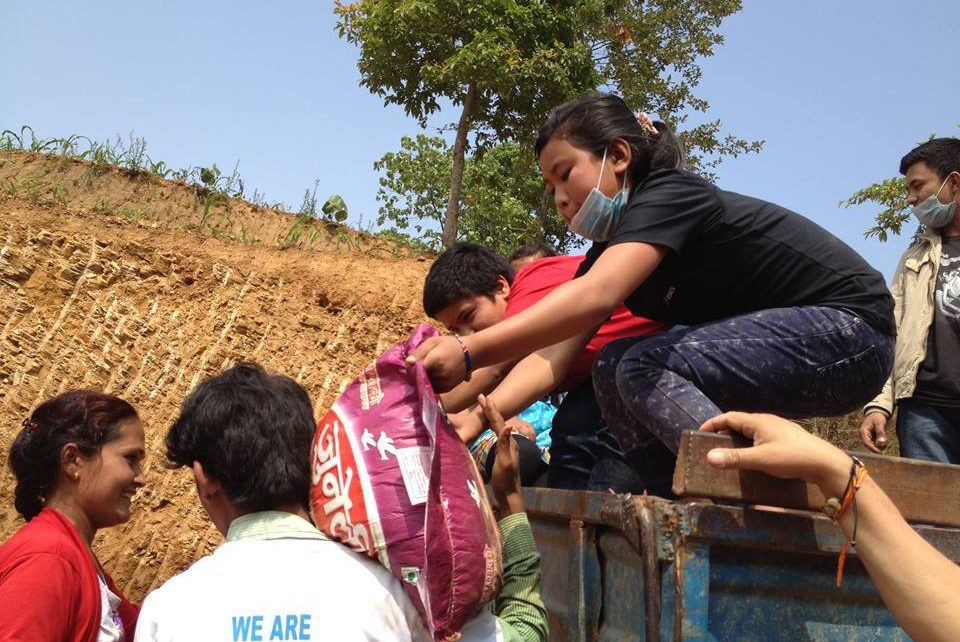
We would like to explore possibility of support for flood affected people in Nepal. We’ve coordinated with local communities and District Disaster Relief Committees (DDRCs) in the districts of Nepal and found highest need of humanitarian assistance.
Let us try whatever we can do, every singly support is counted and any level of contribution is going to be a huge support for people in need.
Beginning Friday, 11 August 2017 Nepal has experienced its worst rains in 15 years, resulting in large scale impacts on life, livelihood and infrastructure across 35 of Nepal’s 75 districts: Panchthar, Illam, Jhapa, Morang, Sunsari, Saptari, Siraha, Dhanusa, Mahottari, Sarlahi, Rautahat, Bar, Parsa, Chitwan, Makwanpur, Lalitpur, Sindhuli, Nawalparsi, Palpa, Kapilbastu, Dang, Banke, Bardiya, Kailali, Surkhet, Salyan and Kalikot. This emergency comes at a time when Nepal is already struggling to recover from the 2015 earthquake, with much reconstruction and recovery work still to be done. Five of the current flood affected districts are also earthquake affected districts, while four of the current flood affected districts were affected by large scale flooding in 2014, and have yet to fully recover.
A total of 1.7 million people are reported to be affected, of whom nearly 461,000 people (91,400 families) have been displaced from their homes. Communities in Rautahat, Banke, Bardiya, Mahottari, Dhanusa and Saptari districts remain inaccessible by road. Biratnagar airport is now operational during day- light hours. As reported on 18th August, the Government of Nepal has welcomed assistance from friendly governments, organisations and interested individuals.
Initial Rapid Assessments (IRA) process which was undertaken in 24 districts, 1.7 million people have been affected by monsoon flooding. The worst affected districts – with the highest caseloads of impacted persons – are Saptari (6489,945 people), Rautahat (266,486 people), Mahottari (200,000 people), Bardiya (134,804 people) and Sunsari (75,207 people).
Results from the IRA also show that almost 65,000 homes have been destroyed and 460,809 people displaced. In the 24 districts where the IRA was completed, 80 schools and 10 health posts have been destroyed by the flood- waters. While many roads have reopened and Biratnagar airport is now operational during daylight, according to data from the Nepal Food Security Monitoring System, more than 50 villages remain inaccessible by road.
Early Recovery Needs:
Ministry of Livestock Development reports immediate need for safe disposal of dead livestock.
Education Needs:
80 schools across 24 districts have been destroyed by flooding and a further 710 have sustained damage of varying severity (IRA).
Schools continue to be used as temporary shelters in flood affected districts according to the Department of Education (DoE). 236,000 children of school going age have been impacted by flooding (DoE). Need for education materials and text-books for different grades in affected districts.
Food Security Needs:
The Nepal Food Security Monitoring System estimates that 940,000 people in flood-affected areas are food insecure of which 300,000 people (including young children) require urgent food aid.
Health Needs:
Floods and landslides have affected an estimated 112,500 women of reproductive age, including 8,694 pregnant women. Ten health posts non-functioning due to flood damage. Services continuing in temporary locations. Preparedness for potential disease outbreak is needed including for disease surveillance and the continued supply of essential medicines to health centres.
Nutrition Needs:
Findings 14 flood-affected districts show that on average 6.8 per cent of children are suffering from severe acute malnutrition (SAM) and 18.9 are suffering from moderate acute malnutrition (MAM), compared with national average of 1.8 per cent and 7.9 per cent respectively.
Protection Needs:
Protection services for vulnerable people including pregnant and lactating women, including safe houses and female friendly spaces. Gender based violence (GBV) and trafficking prevention and responses activities. Psychosocial support for women, girls and vulnerable people.
Shelter Needs:
Almost 461,000 people have been displaced from their homes with nearly 65,000 destroyed housed across 24 districts. Mosquito nets and mattresses required across flood-affected districts
Water, Sanitation and Hygiene Needs:
Hygiene kits especially for pregnant and lactating mothers.
Aqua-tabs, hygiene kits, piyush and buckets identified as immediate needs.
(Data and Initial Rapid Assessments (IRA) information source: Office of the Resident Coordinator Nepal)
